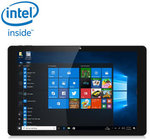This is a very high resolution Chinese tab that runs the latest Apollo Lake quad core processor. Got this in my Google feed today so I had to share.
Quoted from Tech Tablets
it’s got the Surface Book’s 3000 x 2000 screen in it and at 13.5-inches it’s a very large tablet that also supports an optional keyboard dock and stylus. It’s powered by an Apollo Lake N3450, 4GB of RAM and has an eMMC 5 spec 64GB flash drive for storage. Also Intel wireless AC which is much faster and has better range than teh old RealTek wireless N chip in teh Chuwi Hi12.
Linkback
https://techtablets.com/2017/05/deals-chuwi-hi13-279/
Model Chuwi Hi13
CPU Intel Apollo lake Celeron N3450 Quad Core up to 2.2GHz
GPU Intel HD Graphics 500
System Windows 10
RAM 4GB DDR3L
Capacity 64GB eMMC
Screen 13.5 inch IPS Capacitive (10-Point) Screen
Resolution 3000 x 2000
Camera Front is 2.0MP,Rear is 5.0MP




Didn't you used to have a profile pic?